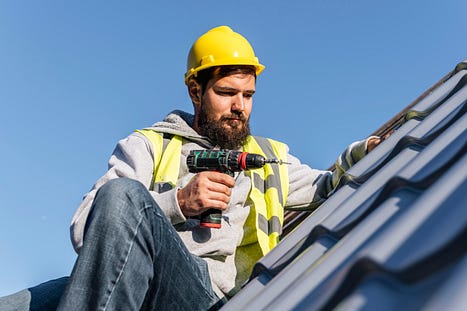How Roof Leaks Contribute to Toxic Mold Issues

If you have a roof leak, it likely worries you to see ceiling stains and potential for collapsed drywall. But beyond the water damage itself, roof leaks also introduce the serious risk of mold growth. Unchecked leaks provide the perfect moist conditions for mold to form in hidden crevices and throughout walls or attics. JC Roofings explains this dangerous potential consequence if roof leaks go unsolved.
Prime Areas Prone to Leak-Related Mold
Mold forms opportunistically wherever it finds dampness and cellulose material to feast on. Key areas vulnerable to roof leak mold include:
Attics
Leak drips directly onto wood roof joists, trusses, rafters and insulation facings, feeding mold colonies. Spores multiply rapidly, then circulate throughout your HVAC system.
Wall Cavities
Moisture penetrates walls from the inside, generating mold along studs behind drywall or paneling where you can’t see it growing until serious issues manifest.
Crawl Spaces
Leaks create wet soil or vapor barriers allowing mold to take hold under your first level floors, escaping notice. But spores still migrate into living areas through ductwork and subfloor seams.
Health Dangers Mold Causes
It only takes microscopic mold spore counts floating through indoor air to create major respiratory and immune response illnesses. Fungal off-gassing irritates eyes, sinuses, throes and lungs. More severe toxic mold cases induce asthma attacks or neurological issues in household members of all ages. Babies, children and elderly residents face higher sensitivity risks. That makes killing roof leak mold vital.
Remediation Steps Required
To combat leak mold dangers, comprehensive action is necessary including:
- Fix Leak Sources — Stopping moisture entry prevents additional mold colony growth needing removal. JC Roofings solves all roof leak causes promptly.
- Dry Affected Areas — Employing specialty drying systems removes supportive moisture so mold dies off.
- Remove Impacted Materials — Take out moldy drywall, insulation, carpets and baseboards to access hidden colonies.
- Treat Surfaces — After demo, cleaning anti-microbial chemicals kill remaining spores on exposed framing or masonry.
- Safe Containment/Disposal — Anyone handling moldy debris must use protective suits and HEPA-filter dust controls so spores don’t spread. Bagged materials also require covered hauling to dumps.
Don’t take chances with water leaks generating unhealthy mold. Call JC Roofings at the first sign of issues to enact containment and eliminate the hazards leaks cause.



Comments
Post a Comment